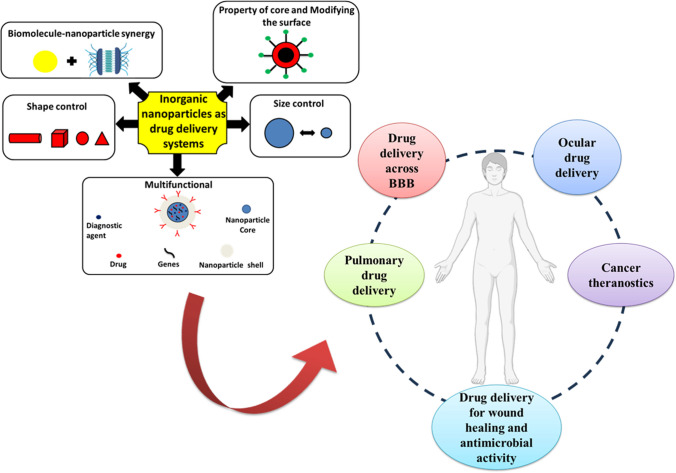- Record: found
- Abstract: found
- Article: found
Exploration of inorganic nanoparticles for revolutionary drug delivery applications: a critical review

Read this article at
Abstract
The nanosystems for delivering drugs which have evolved with time, are being designed for greater drug efficiency and lesser side-effects, and are also complemented by the advancement of numerous innovative materials. In comparison to the organic nanoparticles, the inorganic nanoparticles are stable, have a wide range of physicochemical, mechanical, magnetic, and optical characteristics, and also have the capability to get modified using some ligands to enrich their attraction towards the molecules at the target site, which makes them appealing for bio-imaging and drug delivery applications. One of the strong benefits of using the inorganic nanoparticles-drug conjugate is the possibility of delivering the drugs to the affected cells locally, thus reducing the side-effects like cytotoxicity, and facilitating a higher efficacy of the therapeutic drug. This review features the direct and indirect effects of such inorganic nanoparticles like gold, silver, graphene-based, hydroxyapatite, iron oxide, ZnO, and CeO 2 nanoparticles in developing effective drug carrier systems. This article has remarked the peculiarities of these nanoparticle-based systems in pulmonary, ocular, wound healing, and antibacterial drug deliveries as well as in delivering drugs across Blood–Brain-Barrier (BBB) and acting as agents for cancer theranostics. Additionally, the article sheds light on the plausible modifications that can be carried out on the inorganic nanoparticles, from a researcher’s perspective, which could open a new pathway.
Related collections
Most cited references236
- Record: found
- Abstract: not found
- Article: not found
The rise of graphene.
- Record: found
- Abstract: found
- Article: not found
A roadmap for graphene.
- Record: found
- Abstract: found
- Article: not found
